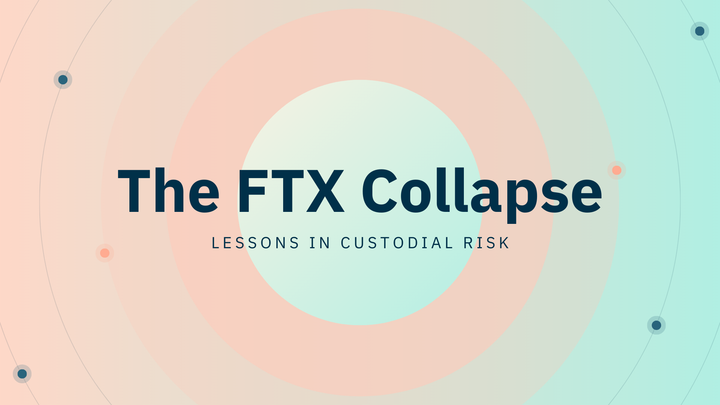The Impact of Bitcoin ETFs on the 2025 Bull Market
This article will first provide an overview of the role of Bitcoin Exchange Traded Funds (ETFs) in the 2025 cryptocurrency bull market. It will then delve into how these ETFs have significantly increased both institutional and retail adoption of Bitcoin. Following this, the analysis will explore the direct influence of ETF inflows on Bitcoin's price action and overall market sentiment. The article will subsequently examine how Bitcoin ETFs have facilitated the integration of cryptocurrencies into the mainstream financial system, making Bitcoin accessible to a wider range of investors. Furthermore, it will discuss the potential of protocols like Mitosis to enhance the efficiency and accessibility of the Bitcoin ETF market through improved cross-chain liquidity. Finally, the article will conclude by summarizing the transformative impact of Bitcoin ETFs on the cryptocurrency market in 2025 and their role in sustaining the current bull run.
Introduction: The ETF Effect
The cryptocurrency market in 2025 has been significantly influenced by the introduction and performance of Bitcoin Exchange Traded Funds (ETFs). These financial instruments, approved in 2024, have provided traditional investors with a regulated and accessible way to gain exposure to Bitcoin, leading to substantial capital inflows and a reshaping of market dynamics. This article will explore the profound impact of Bitcoin ETFs on the ongoing bull market, examining how they have driven adoption, influenced price action, and integrated Bitcoin further into the mainstream financial system. The role of protocols like Mitosis in enhancing the efficiency and accessibility of these markets will also be discussed.
Driving Institutional and Retail Adoption
One of the primary impacts of Bitcoin ETFs has been the significant increase in both institutional and retail adoption of Bitcoin. For institutional investors, ETFs offer a familiar structure that fits within their regulatory frameworks and investment strategies. The approval of spot Bitcoin ETFs by the SEC in the US, for example, opened the floodgates for large financial institutions to allocate capital to Bitcoin without the complexities of direct custody and management of digital assets. See https://www.bloomberg.com/etfs/. BlackRock's Bitcoin ETF quickly became the fastest-growing ETF in history, demonstrating the pent-up demand from institutional investors. Similarly, retail investors have found Bitcoin ETFs to be a convenient way to invest in Bitcoin through their existing brokerage accounts, further broadening the investor base. You can track the performance and inflows of Bitcoin ETFs on platforms like(https://www.bloomberg.com/etfs/) and Yahoo Finance.
Influencing Bitcoin's Price Action
The substantial inflows into Bitcoin ETFs have had a direct and positive impact on Bitcoin's price action in 2025. As ETF providers purchase actual Bitcoin to back their shares, this increased demand puts upward pressure on the cryptocurrency's price. See https://www.bloomberg.com/etfs/. The psychological effect of mainstream financial institutions endorsing Bitcoin through ETFs has also contributed to a more bullish market sentiment. Bitcoin's surge past $100,000 in early 2025 was partly attributed to the unprecedented demand driven by these ETFs. Market analysis from sources like(https://www.tradingview.com/) often highlights the correlation between ETF inflows and Bitcoin price movements.
Integration with Mainstream Finance
Bitcoin ETFs represent a significant step in the integration of cryptocurrencies with the traditional financial system. By allowing Bitcoin to be traded on major stock exchanges through familiar brokerage platforms, ETFs have bridged the gap between the nascent crypto market and established financial infrastructure. See https://www.bloomberg.com/etfs/. This integration has increased the legitimacy of Bitcoin as an asset class and has made it accessible to a wider range of investors who may have been hesitant to engage with cryptocurrency exchanges directly. Financial news outlets such as(https://www.wsj.com/) and(https://www.ft.com/) provide extensive coverage on this integration.
The Role of Mitosis in Enhancing Market Efficiency
Protocols like Mitosis can play a crucial role in further enhancing the efficiency and accessibility of the Bitcoin ETF market. By providing efficient cross-chain liquidity through its miAssets and the Morse bridge, Mitosis can facilitate smoother trading and settlement processes for Bitcoin and related assets across different blockchain networks. The capital efficiency offered by Mitosis can also lead to optimized trading strategies and reduced transaction costs for investors in Bitcoin ETFs. Furthermore, the community-driven governance model of Mitosis can foster a more decentralized and resilient market environment, benefiting all participants in the Bitcoin ETF ecosystem.
Conclusion: A New Era for Bitcoin
Bitcoin ETFs have undeniably had a transformative impact on the cryptocurrency market in 2025, driving increased adoption, influencing price action, and fostering greater integration with mainstream finance. As these financial instruments continue to mature and attract more capital, they are likely to play a key role in sustaining the current bull market and shaping the future of Bitcoin as a mainstream asset. The emergence of innovative protocols like Mitosis promises to further enhance the efficiency and accessibility of these markets, paving the way for a new era of growth and stability in the cryptocurrency space.



Comments ()